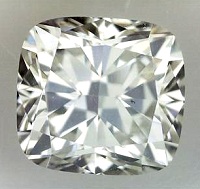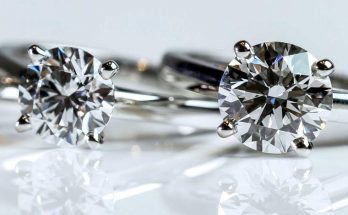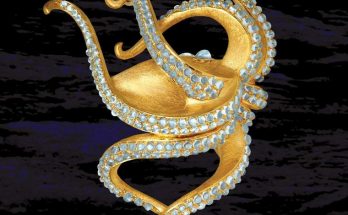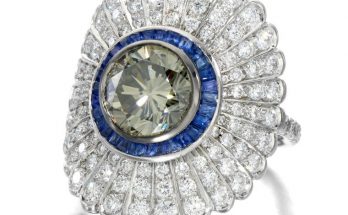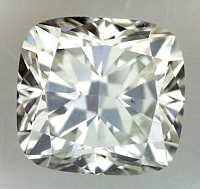 The cushion cut, also known as the pillow cut, is probably one of the most traditional shapes that is still popular at present times. Cushions typically have 58 facets and have highly distinguishable curved corners which gives them a pillow-like appearance.
The cushion cut, also known as the pillow cut, is probably one of the most traditional shapes that is still popular at present times. Cushions typically have 58 facets and have highly distinguishable curved corners which gives them a pillow-like appearance.
Throughout the history of the diamond industry, we had seen constantly changing trends and cutting styles that had continuously evolved. Interestingly, just like fashion trends which seem to take up cyclic patterns, we see the same scenario happening with diamond cuts.
Did you know that cushion cut diamonds actually went “out-of-fashion” in the last century? It was only in recent times where vintage cuts came back in vogue. From old European cuts to old miner cuts, these long forgotten retro designs are finding their way back into the mainstream market of the 21st century.
With its centuries of history, the cushion cut is ubiquitous when you take a look their prominent occurrences in the various royal family jewels. Also, if you take a look at a list of the most renowned or the largest cut gemstones, you will see that the cushion cut is surprisingly well represented.
Cushion Shaped Diamonds in the Modern Market
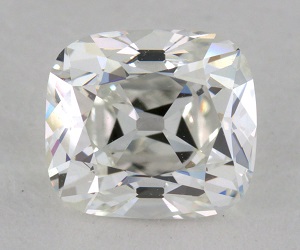
Old Miner Cuts – Vintage
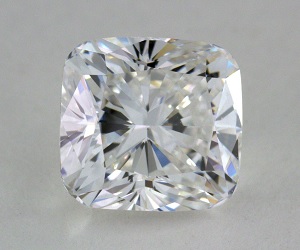
Modern Cushion Cut – Present Day
Due to their recent popularity amongst celebrities, cushion cuts have slowly regained much of their long-lost popularity and are re-living its past renaissance. Antique cushions are popular with customers because of their romantic and classic shape appeal. Steeper crowns, smaller tables, and larger culets are all characteristic features of the vintage cushion cutting style.
On the other hand, modern day cushion cutting styles typically have small or no culets at all and take on an appearance that is closely associated with the round brilliant cut. Instead of broad chunky facets patterning seen in older cutting styles, modern cushion cuts usually portray an outlook that is made of smaller individual facets.
Recommended Proportions for Cushion Cut Diamonds
| Excellent | Very Good | Good | Fair/Poor | |
|---|---|---|---|---|
| Table % | 58% – 63% | 57% – 65% | 55% – 67% | Outside Ranges |
| Depth % | 58% – 66% | 57% – 68% | 55% – 70% | Outside Ranges |
| Polish/Symmetry | Excellent – Very Good | Good | Outside Ranges | |
| Length to Width | 1.00 – 1.05 | 1.06 – 1.20 | 1.21 – 1.35 | Outside Ranges |
| Girdle Thickness | V. Thin – Slightly Thick | V. Thin – Thick | Outside Ranges | |
| Culet Size | None | Very Small | Small | Outside Ranges |
* Note: The proportions table is meant as a general guideline for people who are buying blind. If you can see the diamond in person or via videos, that will always takes precedence instead of trying to judge a fancy cut based on numbers. I also highly recommend that you use an ASET scope to check for optical performance and use this knowledge to help you make better decisions.
Length to Width Ratios for Cushion Cuts
Cushion brilliant cuts can exist in a variety of shapes ranging from squarish to rectangular shapes. This is largely a matter of personal preference and also dependent on the type of ring setting to be used. The most popular l/w ratios for a cushion cut lie between 1.00 to 1.05 where the diamond takes on a squarish looking appearance.
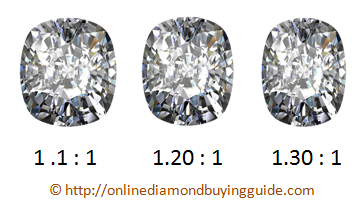
Buying cushions can be a tricky affair due to the lack of cut information that you can obtain from the grading report. You see, when it comes to fancy cuts, 2 diamonds with the same depth/table proportions can look totally different from each other. Also, there is no guarantee you will get a great looking stone even if the “statistics” on a grading report look promising.
To overcome this problem and select the most brilliant stone for your budget, there are certain methods you can undertake when you go shopping. I will explain this in more details on the following page…
>>
